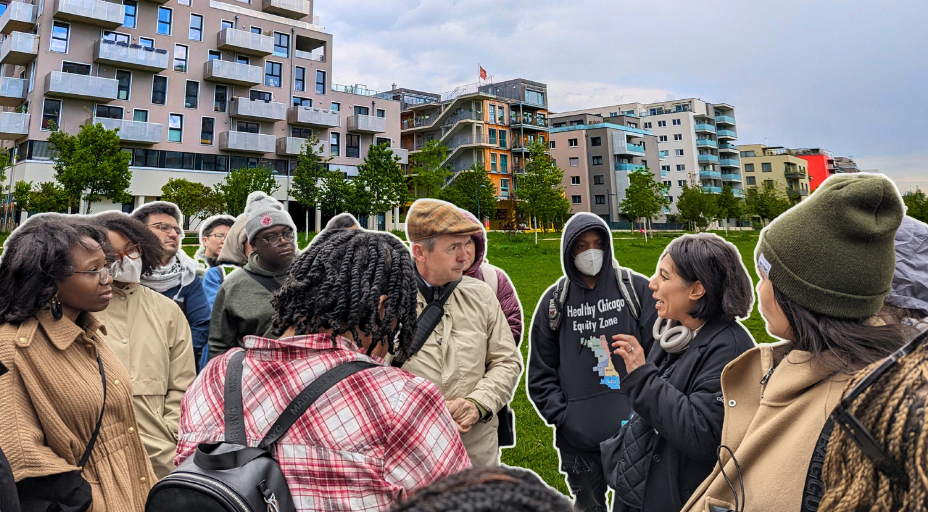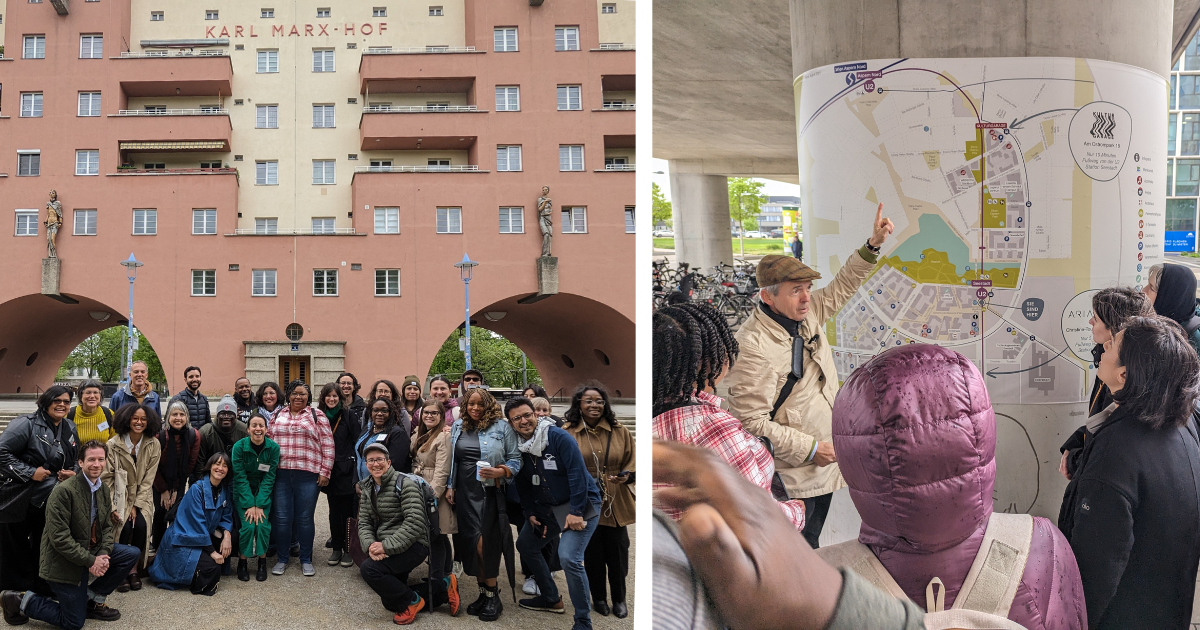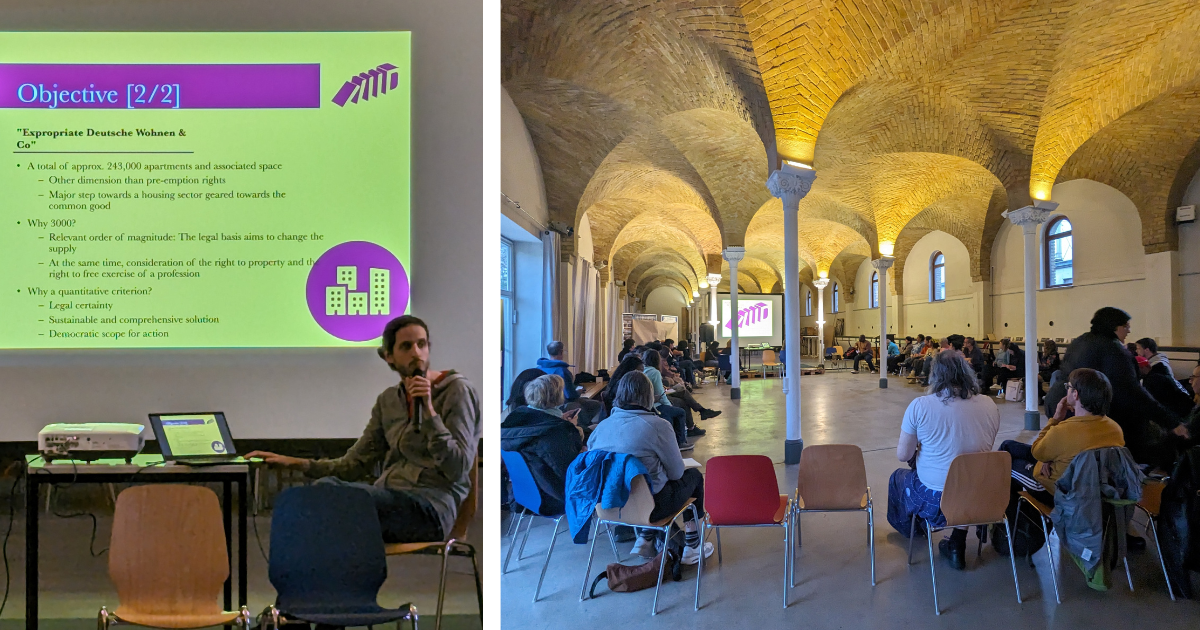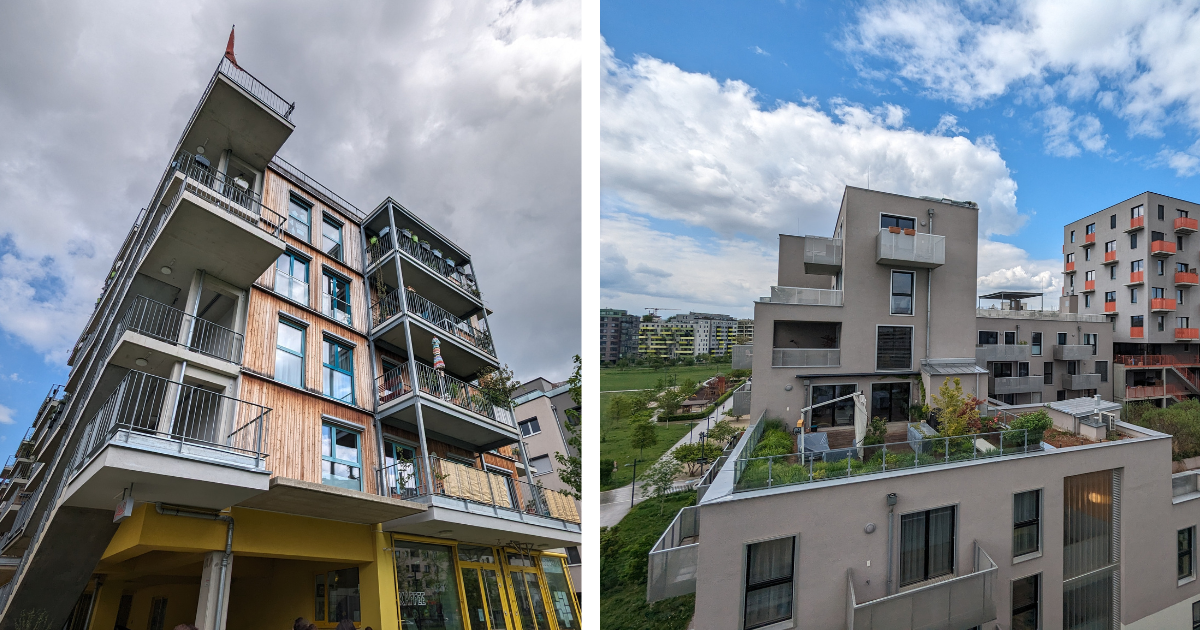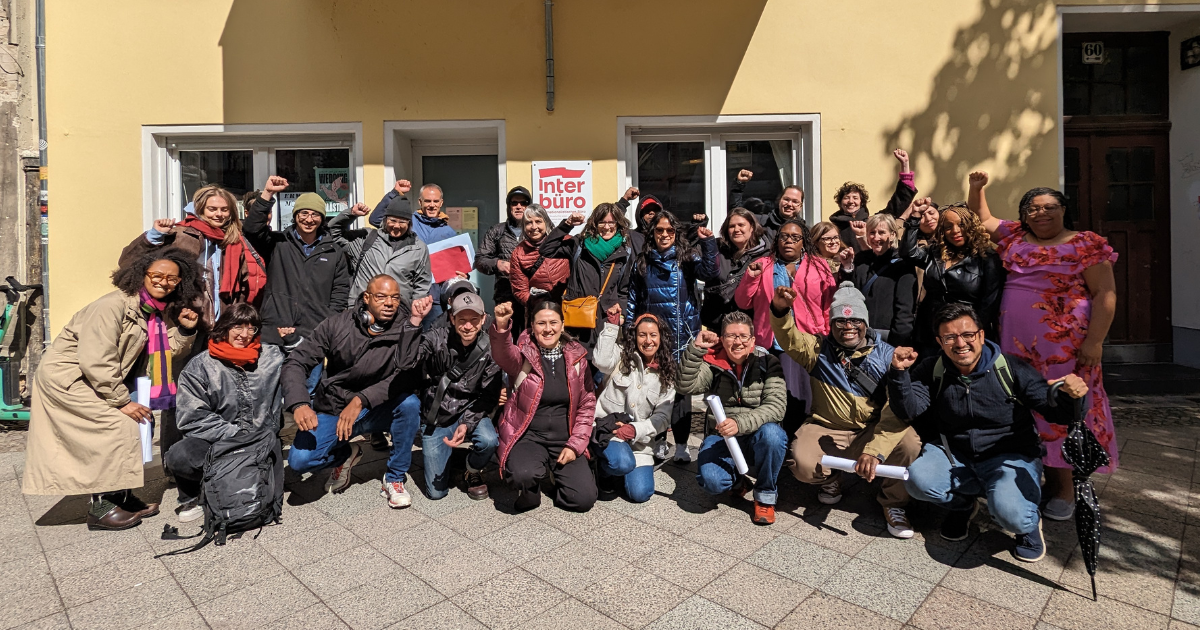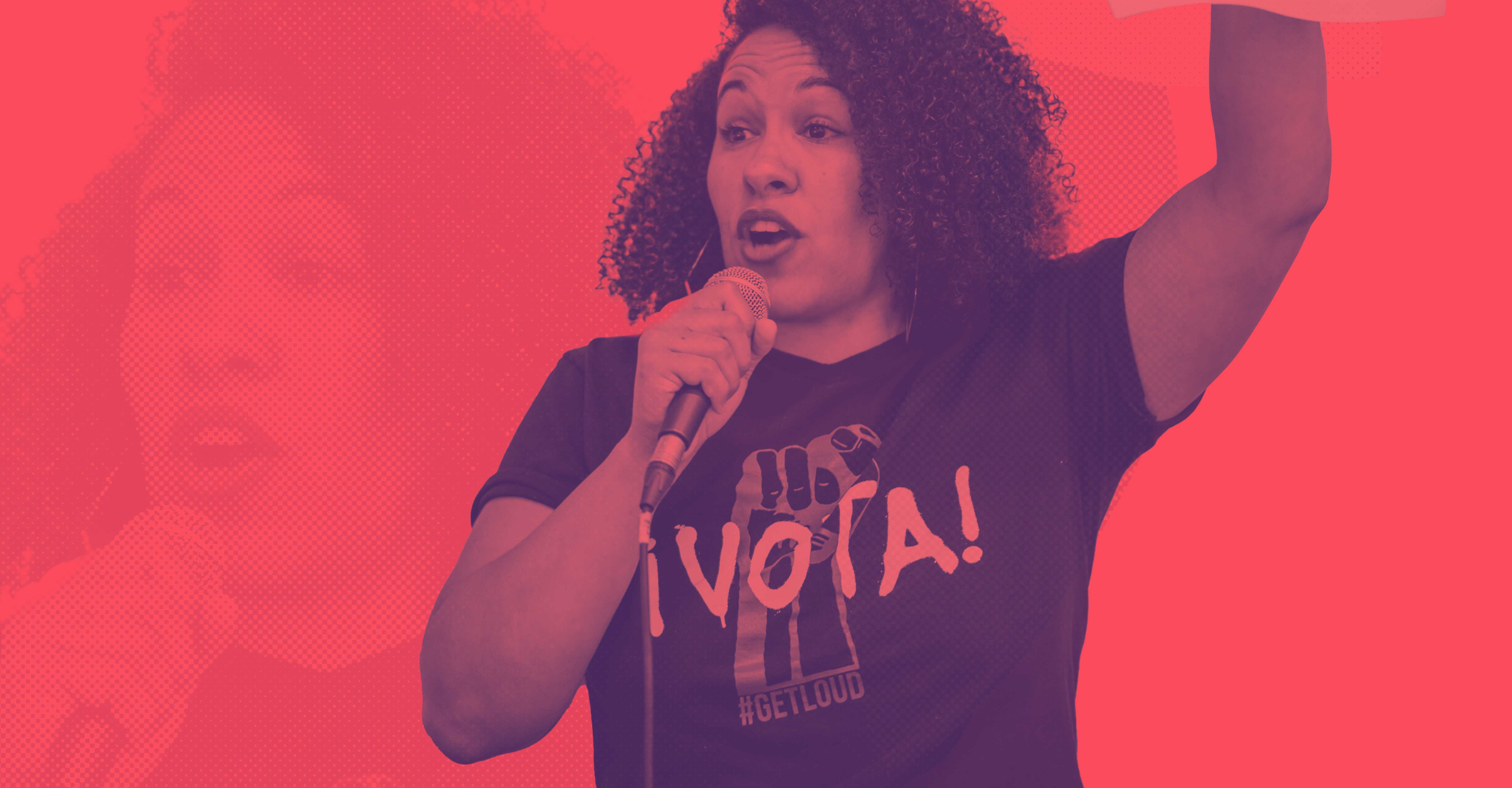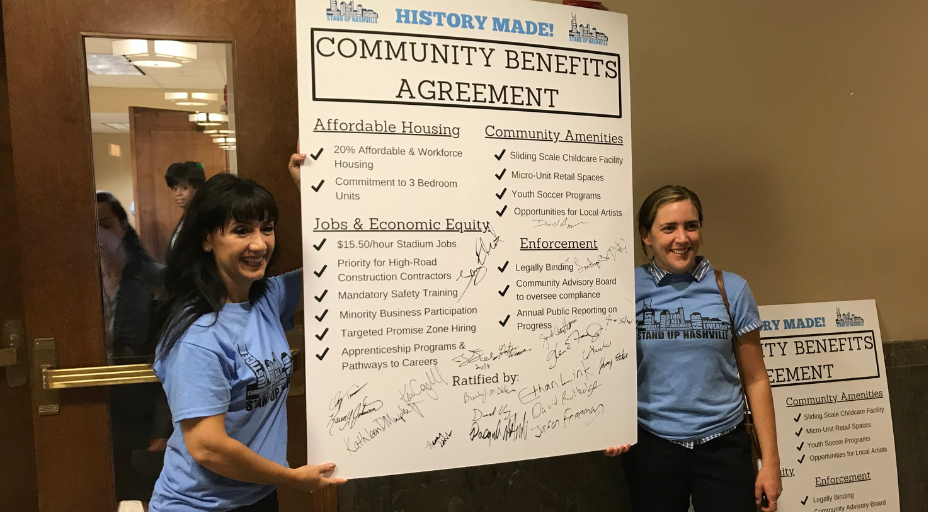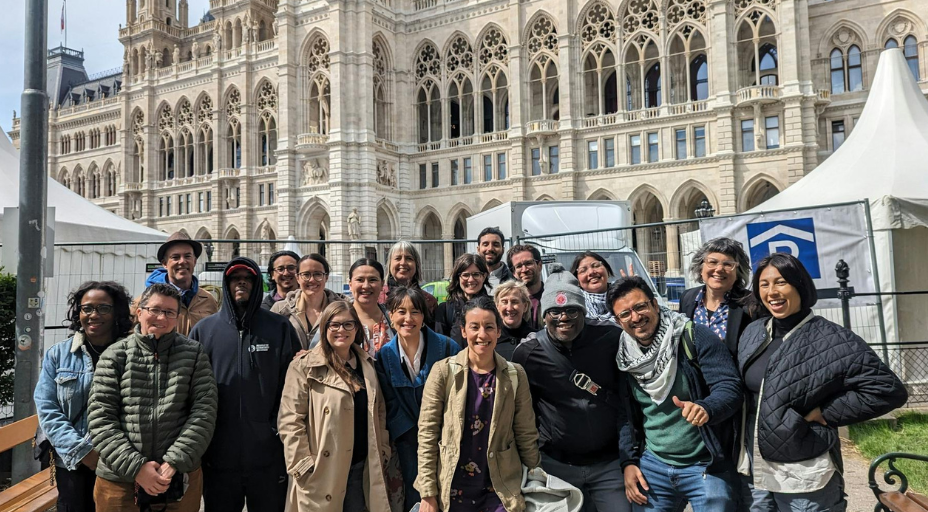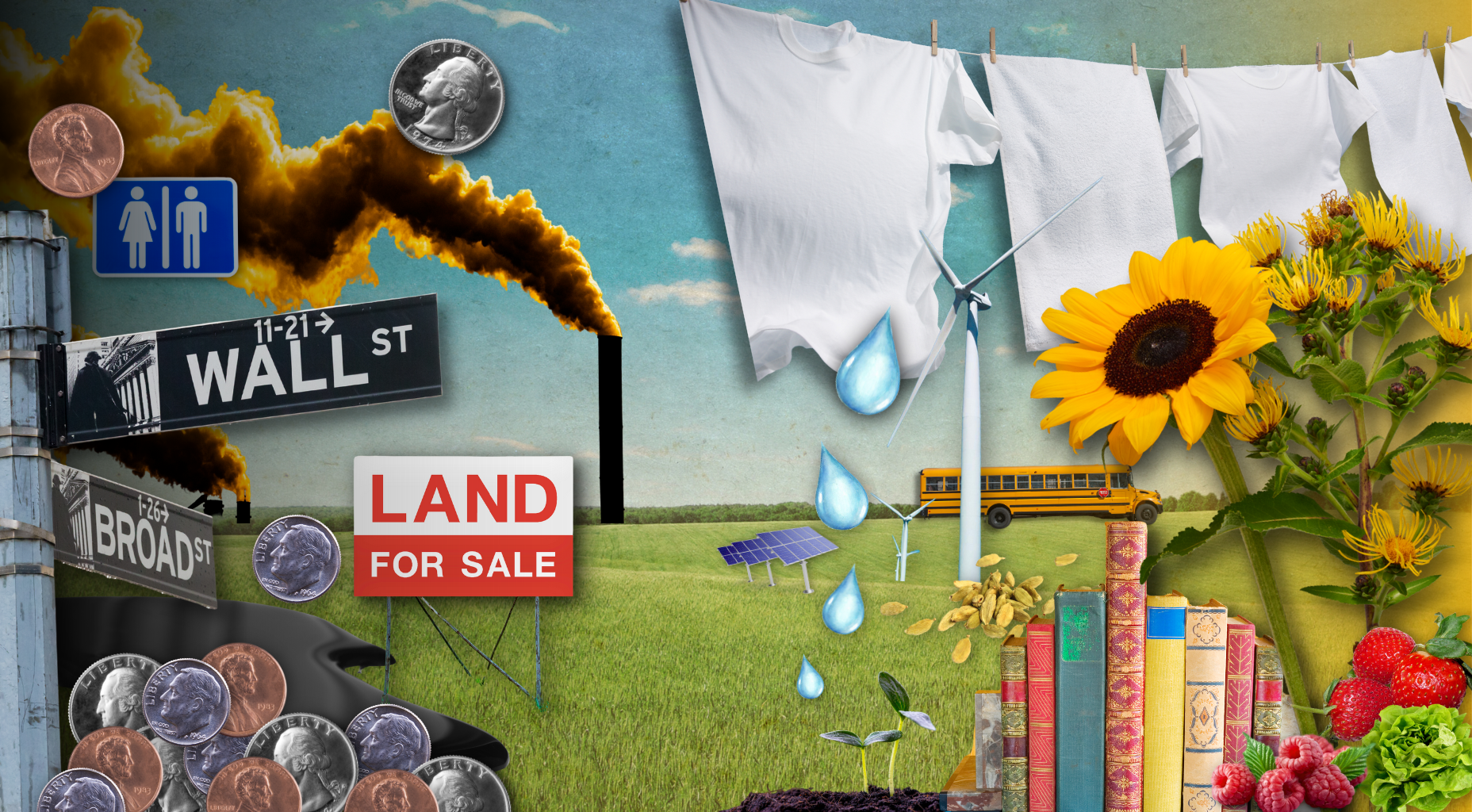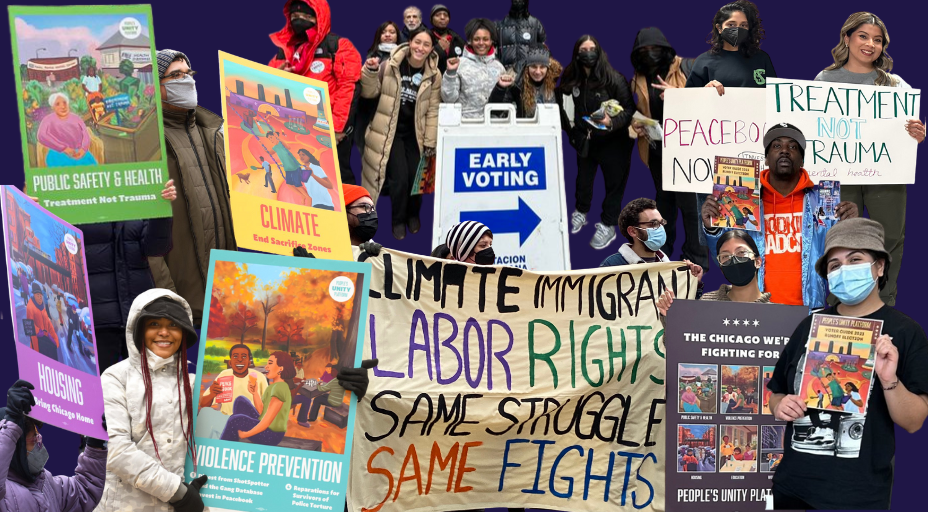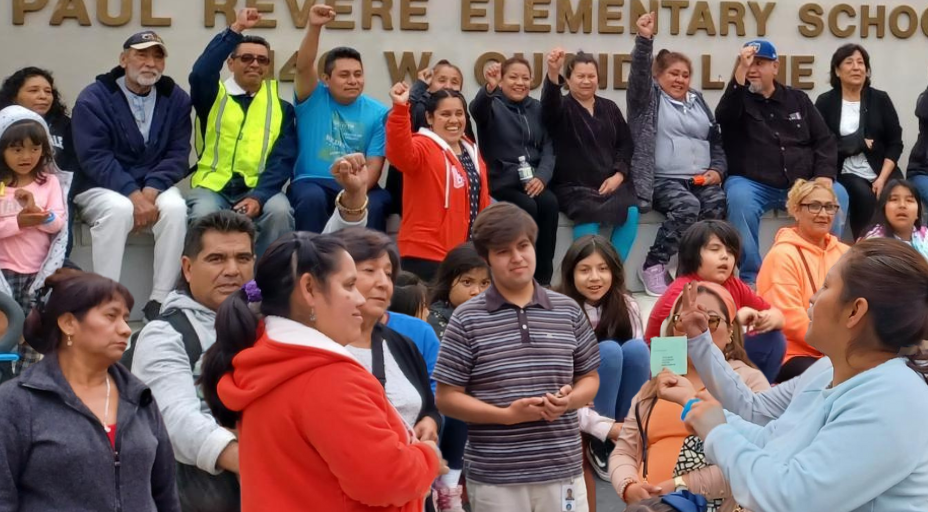By Christina Rosales, Housing and Land Justice Director
Last month we brought together 30 housing organizers and elected leaders from across the country on a learning trip to Vienna and Berlin. Over the course of five action-packed days, we met with city officials and campaign organizers, visited notable social housing projects and neighborhoods, and had deep, insightful conversations about how to create and sustain community-controlled housing.
Our notebooks are packed with ideas about city planning, financing models, climate adaptation strategies, tenant organizing tactics, and more. We dove into the historical context of both cities, the nitty gritty details of their respective housing systems, and practical guidance, all of which are seeding big ideas and inspiration for our own cities.
Here are 3 big lessons that can power up our fights at home:
Put land in public hands
When we arrived in Vienna, we saw with our own eyes the social housing system that we had heard so much about: high quality, beautiful homes; affordable, stable rents; strong tenant protections; and people who felt cared for, content, and proud of where they live. This model is the result of political shifts and investments made over a century ago, when the city began buying up land and using it to build municipal housing developments that included social goods such as libraries, child care centers, and post offices. For many working-class Viennese, this was the first time they had access to decent housing and services like these.
We went to visit Karl Marx-Hof, a public housing project built in 1927, and spoke with people who are still living there today. A few miles away, we walked around Seestadt, a new neighborhood development being constructed on a former airport that is now publicly-owned land. Built around a lake, the project will be a mix of municipal housing, co-ops, limited-profit housing, and commercial spaces, with residents deciding together on what they need and want in their neighborhood. Today the vast majority of Viennese people qualify for social housing programs and nearly two out of every three actually live in social housing. The success and scale of the program is achieved through the city’s vast control of the land and a commitment to use the land to further societal housing and common goods for all.
Contrast this with Berlin, where we encountered a system very similar to what we see in the US: what happens when a city sells off its housing to private real estate. Amid a budget crisis in the early 2000s, the city decided to sell more than 200,000 units of public housing for very cheap to private corporations. What happened next is no surprise: corporate landlords jacked up the cost of rent. The situation is so familiar to us, and that’s why we met with organizers from Deutsche Wohnen & Co. enteignen (DWE), a campaign to seize privately-owned housing and put it back in the hands of the government to use for socially-controlled housing. The DWE campaign launched in 2018 and won a referendum vote in 2021; now they’re organizing and building power around a second, legally binding ballot measure to reclaim public land and put it under community control.
Have people govern it
What’s happening in Berlin is the result of people building power together, and tapping into a shared sense of agency and hope to create something different for themselves and their communities. One of the goals of the DWE campaign is to have publicly-owned, community-governed buildings run by tenant councils, and they’re building the muscle for that kind of governance structure in the ways that they make decisions internally and organize out in neighborhoods. The campaign has task forces, working groups, elected representatives, and meetings where they vote on decisions; and they build out neighborhood organizations where members can engage with the campaign in different ways. We met with a hyperlocal tenant union that organizes for direct needs with tenants experiencing problems like run down buildings or unjustified fees. These local unions then feed into the larger campaign toward achieving systemic, generational change. These formations of volunteers and activists, none of whom are paid staff, were able to collect 175,000 signatures from across the city to get the campaign’s referendum on the ballot.
For folks in Vienna, the community governance aspect of housing is built into systems and structures that people interact with on a daily basis. For example, we visited the Vienna Chamber of Labor (the Arbeiterkammer, or AK), a body that, by law, represents every worker , collects dues from each member, and is accountable to the needs and interests of working people through elections, services, and legislation. During the pandemic, for example, the Chamber won $400 million in subsidies for people with COVID who were unable to work and therefore unable to pay rent. We learned about the Chamber’s role in passing a citywide vacancy tax and pushing for limited profit associations, and about their current policy demands around public land use, subsidized constructions, rent control, and more. The fact that everyday people are able to engage in a labor body to enact policies that impact other parts of their lives and society writ large demonstrates how practiced people are in determining what they need and how those needs are met.
Make it high quality and beautiful
One of the hallmarks of housing in Vienna is how comfortable and pleasing it looks — particularly for folks in the US, where there are stigmas and stereotypes associated with public housing. But social housing doesn’t mean poorly constructed, drab, or uncomfortable. When people have a say in it — when it’s built for us, by us — our housing can be beautiful, comfortable, long-lasting, and sustainable. Take Sonnwendviertel, another neighborhood we visited, which is being developed by the city on the site of a former train station. It features a park and housing projects for over 13,000 residents, among them Gleis 21, a resident-owned and operated building. The residents, all of whom are members of the association that runs the building, designed Gleis 21 with sustainable materials and with spaces for community events, cultural programs, and small businesses. In addition to private living spaces, there is a children’s playroom, sauna, library, laundry and fitness rooms, workshops and studios, and open spaces on the roof to garden. The building is beautiful, communal, and intentional about providing units for young folks, families, seniors, and refugees.
In Vienna, we can see what’s possible when a housing system is people- and solution-oriented, not profit motivated. The long-term commitment of the local government to secure and adapt its housing and land system has made it so that people’s basic need for shelter and safety are taken care of. And that, in turn, makes it easy for people to care for their homes and one another.
What Vienna has built over 100 years is inspiring, if not a bit daunting for those of us in the US. It’s understandable that such an abundant, people-centered system might feel out of reach. In the same vein, it’s easy to look at the housing crisis in Berlin and feel resigned to a world where corporations profit off our basic needs. But, if the DWE organizers have taught us anything, it’s that cheerful, hopeful campaigning in the belly of the beast can create big, tangible wins. The historical and political context in Vienna and Berlin may be vastly different, but we’re closing out this trip with a clear call to action: to think boldly about what's possible when our housing system is built to serve people, about how we organize our communities to take back our homes from corporations, and about how we make that happen here in the US.
